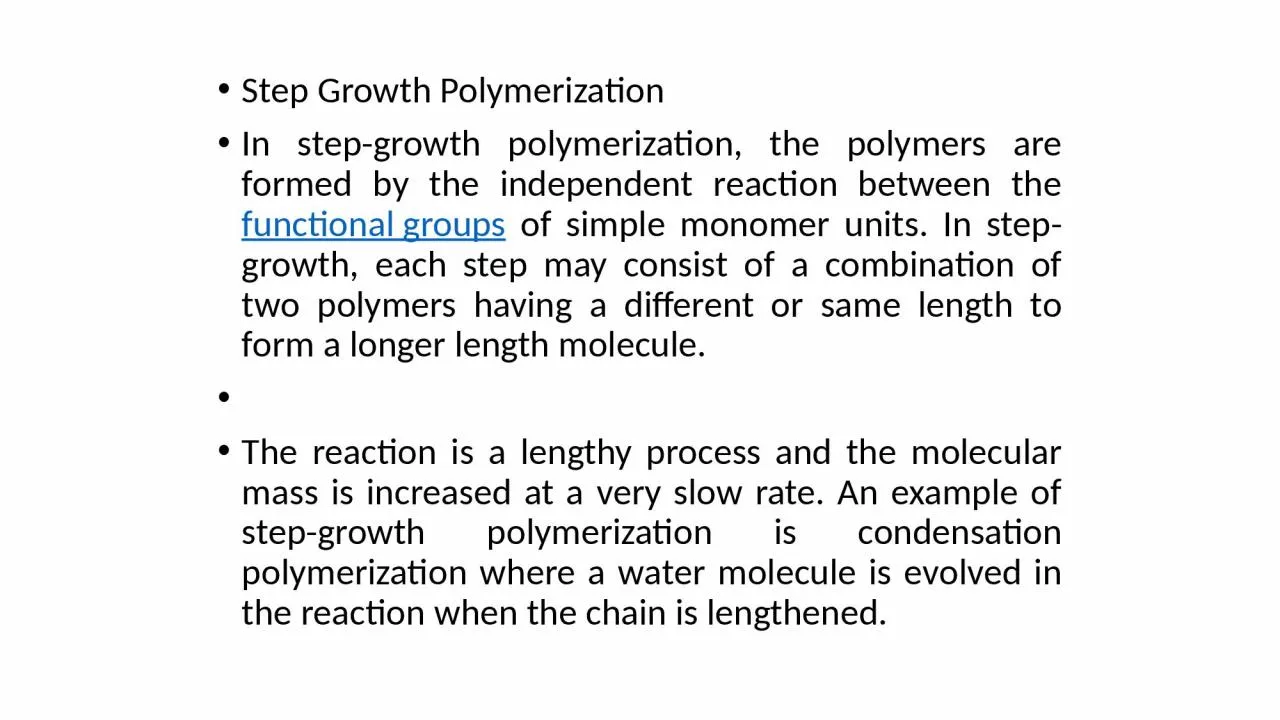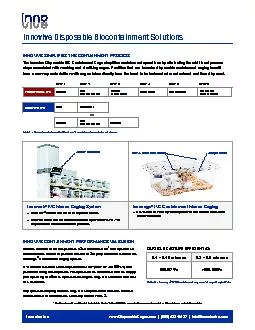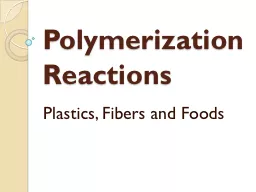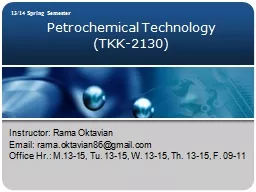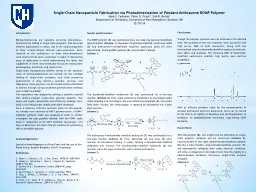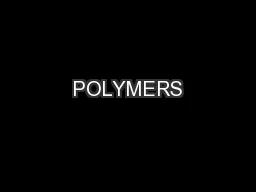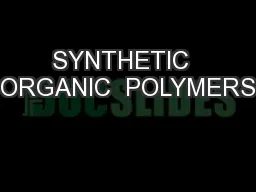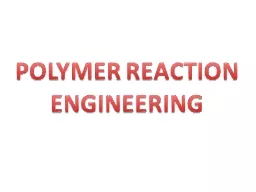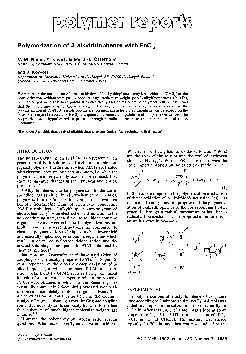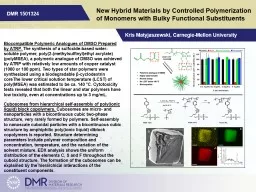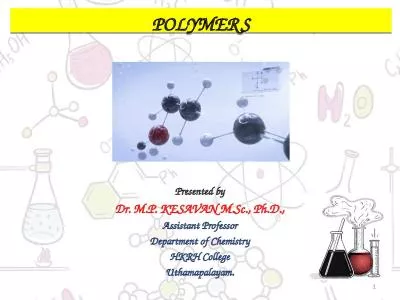PPT-Step Growth Polymerization
Author : christina | Published Date : 2024-03-15
In stepgrowth polymerization the polymers are formed by the independent reaction between the functional groups of simple monomer units In stepgrowth each step may
Presentation Embed Code
Download Presentation
Download Presentation The PPT/PDF document "Step Growth Polymerization" is the property of its rightful owner. Permission is granted to download and print the materials on this website for personal, non-commercial use only, and to display it on your personal computer provided you do not modify the materials and that you retain all copyright notices contained in the materials. By downloading content from our website, you accept the terms of this agreement.
Step Growth Polymerization: Transcript
Download Rules Of Document
"Step Growth Polymerization"The content belongs to its owner. You may download and print it for personal use, without modification, and keep all copyright notices. By downloading, you agree to these terms.
Related Documents

